This post may contain affiliate links, which means I’ll receive a commission if you purchase through my links, at no extra cost to you. Please read full disclosure here.
In Korean, 이것, 그것, and 저것 are used to refer to “this,” “that,” and “that over there,” without naming the actual object. In everyday speech, you’ll often hear their shortened casual forms: 이거, 그거, and 저거.
Here’s how they work:
- 이것 [igeot] → 이거 [igeo]: “This thing” – For something near the speaker.
Example: 이거 뭐예요? (What is this?)
- 그것 [geugeot] → 그거 [geugeo]: “That thing” – For something near the listener or something previously mentioned.
Example: 그거 주세요 (Please give me that).
- 저것 [jeogeot] → 저거 [jeogeo]: “That thing over there” – For something far from both of you.
Example: 저거 예뻐요 (That over there is pretty) or (That is pretty).
The shortened forms are more commonly used in everyday conversations, so they’re good to know when speaking naturally.
Note: The words 이, 그, and 저 function as demonstrative adjectives (this, that, that over there) when used alone. However, when you add 것 (or its shortened form 거), they become demonstrative pronouns that refer to specific objects or concepts.









